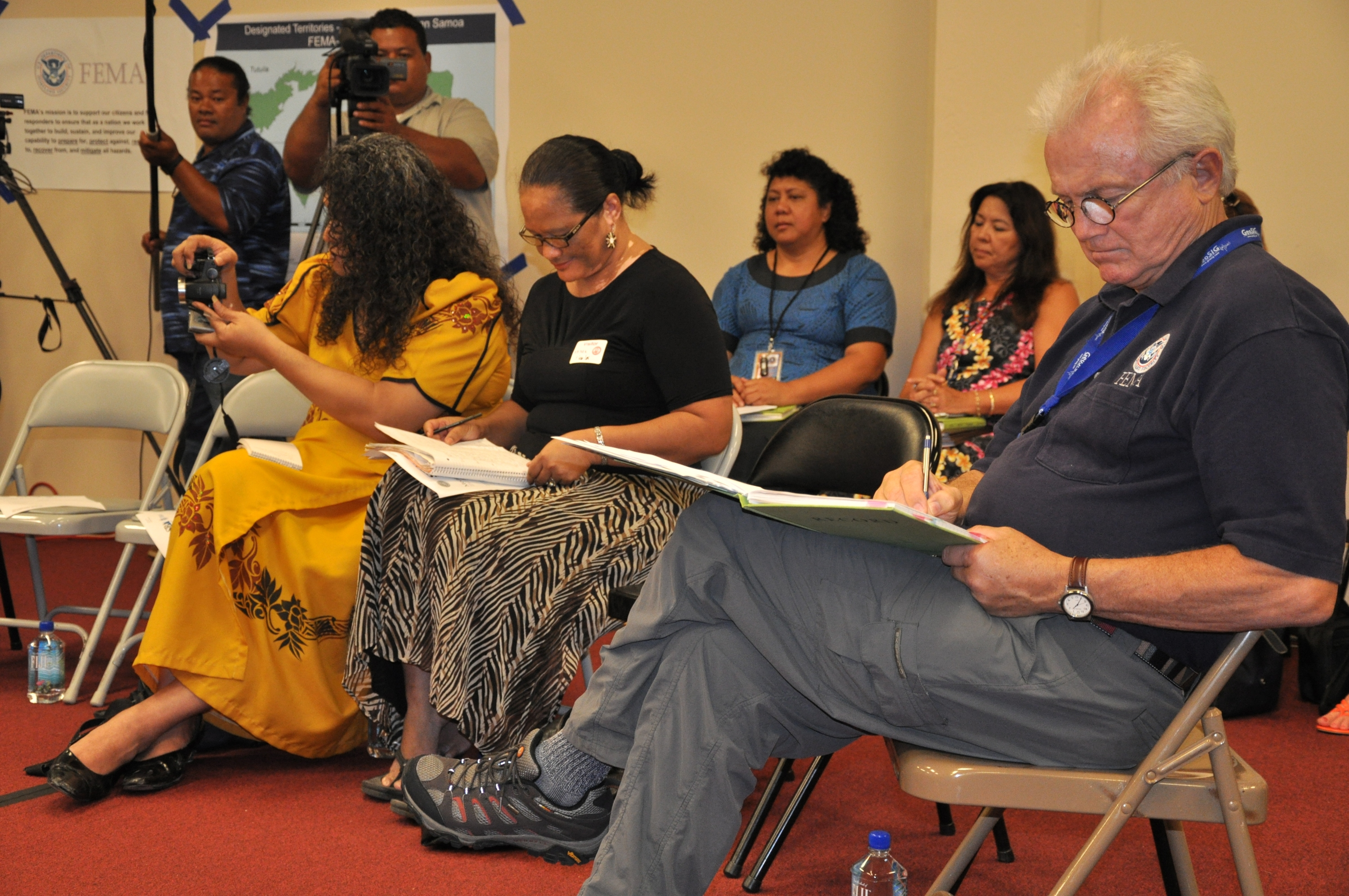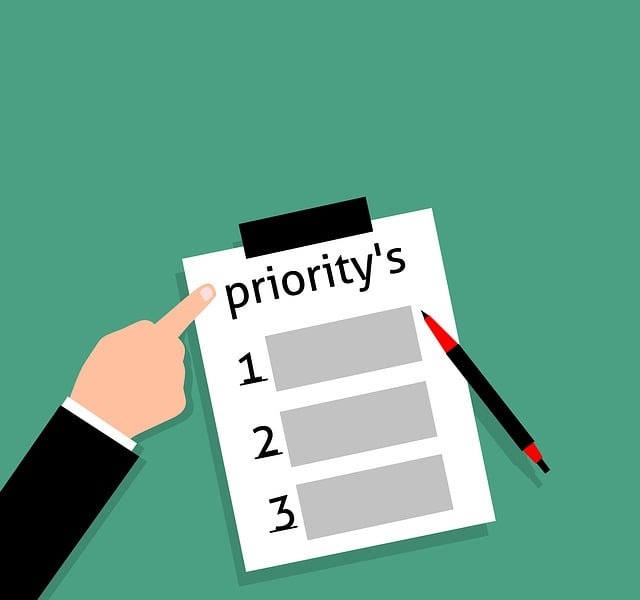What is PR?
PR, or public relations, is a strategic marketing communications process that builds mutually beneficial relationships between organizations and their public. The best way to understand public relations is to think of it as a way to manage your company’s reputation. It’s a process that helps you create positive news stories about your company. The ultimate goal of public relations is to get your company recognized and talked about by potential customers in a positive light.
How Does Public Relations Work?
To use public relations to get your company the attention it needs, you first have to understand what goes into a successful public relations campaign.
First, you need to create a public relations strategy. This includes deciding who your target audience is, what you want to say to that audience, and where you want to reach them. You also need to create a public relations calendar that includes when you want to start releasing information about your company, what days you want to release information, and how often you want to release information.

You also need to make sure that your public relations managers are monitoring the progress of your public relations campaign. This includes making sure that the information you’re releasing is engaging and truthful.
You’re also going to want to make sure that the people you’re releasing information to are seeing it. This can include using public relations distribution software to make sure your news is shared by the right people.
Why You And Your Brand Need PR
- Building trust and credibility: PR can help organizations build trust and credibility with their target audiences by sharing their story, news, and expertise, and by responding to customer inquiries and concerns. This can help organizations stand out from their competitors and build long-term relationships with their customers.
- Managing reputation: PR can also play a key role in managing an organization’s reputation and responding to potential crises. By proactively communicating with the media and other stakeholders, organizations can ensure that their brand remains positive and respected, even in challenging circumstances.
- Enhancing other marketing activities: PR can support and enhance other marketing activities (where marketing refers to activities done for business promotion), such as advertising, branding, and customer engagement. By working closely with the marketing team, PR can help ensure that the organization’s messaging and communication efforts are consistent, coherent, and effective.
Overall, PR is an important part of every marketing world strategy. It helps organizations build trust and credibility with their target audiences, manage their reputation, and enhance their other marketing activities.
Difference Between Public Relations And Advertising
When most people think of public relations, they think of advertising. This is why there’s a lot of confusion around the two terms. The truth is that public relations and advertising are two very different things. With advertising, you’re paying to promote a product or service that you already have.
With public relations, however, you’re getting the word out about your company even if you don’t have a product or service to offer just yet. It is because public relations is about the direct control of your company’s image and getting people interested in your brand even if they don’t know it. It’s about making your company desirable.
Shaping Public Opinion Using Public Relations
Public relations is much more than just getting your name out there. It’s about shaping public opinion. The best public relations firms know how to shape public image and how important it is to create a strong relationship with their clients.
You can shape a positive public image by thinking about how you want your brand to be viewed. This includes defining your brand’s identity and creating content that reflects that identity.
When you shape public thinking, you’re making people think a certain way about your brand. You’re making them feel something when they think about your company.
Public Relations Using Social Media
Social media is one of the most effective ways to use public relations to get your company in the spotlight.
With platforms like Facebook, Instagram, Twitter, and YouTube, your public relations managers can connect with and build relationships with potential or prospective customers.

Finally, you can use public relations to secure mentions on social media platforms. This is when you get other social media users to mention and link to your company.
When other popular accounts mention you, it’s like getting an endorsement from them. This is great for getting potential customers to take notice of your brand. your public relations specialist must make the best of opportunities like these.
Here are some tips for using social media for public relations (PR):
- Identify the social media platforms that are most relevant to your target audience and goals, and focus on those platforms rather than trying to be active on every platform.
- Develop a social media strategy that aligns with your overall PR goals and messaging. This might include creating a content calendar, identifying key influencers and partners, and setting measurable goals and metrics for success.
- Ensure that your public relations specialists are consistent and transparent in your social media communications. This means using the same tone, voice, and branding across all of your social media channels, and being open and transparent about your activities and interactions.
- Engage with your followers and other stakeholders on social media. This means responding to comments and messages, asking questions, and sharing interesting and relevant content.
- Use social media to share your company or organization’s story, news, and expertise. This might include sharing press releases, highlighting customer success stories, or providing industry insights and analysis.
- Monitor and measure the PR results of your social media efforts. This might include tracking likes, shares, comments, and other engagement metrics, as well as using tools like Google Analytics to measure the traffic and conversions that your social media activities generate.
By following these tips, you can effectively use social media as a PR tool to reach your target audience and achieve your communication goals.
Public Relations Using News Media
If your company is trying to accomplish a specific goal, such as increasing sales, you can use public relations to secure news coverage. You can pitch news stories to journalists who write about topics related to your company using media relations.
You can also pitch stories to guest editors, who write about different topics for each issue of a publication. When pitching news stories, you should focus on getting the attention of an editor.
For this purpose, you can use your public relations partner’s media relations resources. This means that you should pitch directly to the editor and not the reporter who covers your industry. When you approach an editor via media relations, you should have your pitch ready. This should include the headline, a summary of the story, who it’s targeting, and why they should care.
Once you have the attention of an editor, you need to prove why your story deserves to be in their publication. But reaching an editor directly is a difficult task. For this purpose, you will need public relations professionals who have worked in the paid media industry and understand community relations.

This is critical as editors get a few thousand submissions every day. You can get their attention only when you have media attention and a strong relationship with news outlets. But not everyone has a relationship with traditional media.
A PR firm cultivates media channels and ensures that the media coverage of its clients builds a positive public perception. This can be done through both paid media and earned media. These positive PR efforts help shape brand perception and understanding of your brand.
Paid Media
Paid media in public relations (PR) refers to any communication channel or tactic that an organization pays to use to reach its target audience.
This might include advertising in traditional media outlets, such as newspapers, magazines, or television, as well as online advertising, such as sponsored posts on social platforms or display ads on websites.

Paid media can include things like advertising in traditional media outlets, such as newspapers, magazines, or television, as well as online advertising, such as sponsored posts on social platforms or display ads on websites.
Earned Media
Earned media in public relations (PR) refers to any media coverage that an organization receives without having to pay for it. This can include things like news stories, interviews, reviews, or other content that is generated by journalists or other independent sources.
Earned media is often contrasted with paid media, which refers to any communication channel or tactic that an organization pays to use to reach its target audience.
Earned media can be a valuable part of a PR practitioner’s strategy because it provides third-party credibility and endorsement, and can be less expensive than paying one.
Media Relations
Effective media relations is an important part of any public relations (PR) strategy. Here are some tips for managing media relations effectively:
- Identify the key media outlets that are relevant to your industry or target audience, and build relationships with the journalists and editors who cover those topics.
- Develop a clear and compelling message that captures the essence of your company or organization, and make sure that all of your communications are consistent with that message.
- Create a media kit that includes information about your company or organization, as well as press releases, fact sheets, and other materials that journalists can use in their reporting.
- Monitor the media for opportunities to share your message and expertise, and respond quickly and accurately to journalists’ inquiries.

- Use social media and other online tools to share your story and engage with journalists and other stakeholders.
- Evaluate the success of your media relations efforts by tracking media engagement and measuring the reach and impact of your messages.
By following these tips, you can build strong relationships with the media and effectively share your company’s or organization’s story with your target base.
Employee Relations In PR
Employee relations in public relations (PR) refer to the way that an organization communicates with and manages its employees. This can include activities such as employee engagement, communication, training, and development, as well as the management of employee benefits and workplace policies.

Effective employee relations are important for PR because they can help organizations maintain a positive reputation and build trust with their employees. This can lead to higher employee morale and engagement, which can in turn improve the organization’s performance and reputation.
Influencer Relations
Influencer relations can be an important part of all PR strategies because influencers can help organizations reach a wider audience and build credibility and trust with their followers. By working with influencers, organizations can gain access to their audience and receive endorsements and recommendations from trusted sources.
Public relations professionals can play a key role in managing influencer relations by identifying relevant influencers, building relationships with them, and developing strategies for working with them. This might include providing influencers with exclusive access to products, events, or other content, or sponsoring their content or activities.
Community relations
Community relations in public relations (PR) refer to the way that an organization communicates with and engages with the community in which it operates. This can include activities such as community outreach, volunteering, sponsorships, and other forms of engagement.
Effective community relations are important for PR because they can help organizations build and maintain a positive reputation and relationship with the community in which they operate. This can lead to increased trust and support from the community, as well as improved customer relationships and brand awareness.
The Role Of Press Releases
A press release is a written or recorded communication that is directed at members of the news media to announce something newsworthy. Typically, a press release is written in a way that is intended to persuade the media to include information about a particular event, product, or service in a news story.
In public relations, press releases distributed by PR agencies as part of elaborate pr campaigns and pr strategies can be an effective way to promote a company, organization, or individual and to generate media engagement for their activities. Releases can also be used to announce important developments, such as changes to a company’s leadership or the launch of a new product.

A press release can be a useful tool for managing a brand’s reputation. By providing information to the media in a timely and transparent manner, a brand can help to shape the public’s perception of the brand and can address any potential issues or concerns that may arise. A press release can also be used to announce positive developments, such as partnerships, awards, or other milestones, which can help to enhance a brand’s reputation. Therefore, writing press releases is an easy way to communicate.
Tips for Successful Public Relations Campaigns
When it comes to public relations, there are several things that you need to keep in mind. You need to make sure that you’re releasing truthful and engaging information about your brand as it helps build your brand’s reputation.
You should also make sure that you’re monitoring your progress and adjusting as needed. There are several things that you can do to make sure that your public relations campaign is successful.
Create a public relations strategy
Before you approach any outlets to tell your story, you need to have a public relations strategy in place. You need to know who your target audience is, what you want to say to them, and where you want to reach them.
Use social media to strategize with your public relations team before you create public relations content. This involves conducting market research, talking to public relations specialists about improving internal relations and customer relations, building investor relations, using crisis communications, dealing with external parties, etc.
Make sure your brand has a consistent message
When you’re releasing public relations content, you need to make sure that it matches the rest of your branding.
This means that you should have the same brand voice in your public relations content as you do in your marketing efforts. It’s also important to make sure that your public relations content has a consistent message. This means that all of your public relations content should be related to your brand’s message.
Mutually Beneficial Relationships
A relationship with mutual benefit in public relations (PR) is a relationship in which both parties derive value from their interactions.
Such a relationship is managed and directed by a dedicated pr professional on both sides. It is the pr professional or public relations manager who sets the agenda for the relationship in alignment with the goals of the company.
Let’s take one of the most common public relations examples. A company may have a mutually beneficial relationship with a media outlet in which the company provides the outlet with exclusive access to its products or executives, and the outlet provides the company with valuable exposure and coverage. It could also have such a relationship with nonprofit organizations to help with corporate social responsibility.

In a mutually beneficial relationship, both parties work together to achieve their respective goals. For the company, this might include increasing brand awareness, generating leads, or building trust and credibility with customers. The relationship is managed by experienced pr professionals.
For the media outlet, it might include securing interesting and newsworthy content, building relationships with sources, or increasing readership or viewership.
By working together, both parties can achieve their goals more effectively and efficiently than they could on their own. A mutually beneficial relationship in PR is a win-win situation for both parties. When managed by PR professionals, it is possible to get the best deal out of it for both parties involved.
Strategic Communication Process
The strategic communication process in public relations (PR) involves several steps that are designed to help organizations achieve their communication goals. These steps are typical as follows:
Identify the organization’s communication goals
The first step in the communication process is to identify the specific goals that the organization wants to achieve through its PR activities. These goals might include increasing brand awareness, generating leads, improving customer relationships, or building trust and credibility.

Develop a communication strategy
Once the communication goals have been identified, the next step for your PR department is to develop a plan for achieving those goals. This might include creating a messaging framework, identifying target audiences, and choosing the channels and tactics that will be used to reach those audiences.
Implement the communication plan
Once the communication strategy has been developed, the next step is to put it into action. This might involve creating and distributing communication releases, organizing events, conducting media interviews, or using social media and other online tools to share the organization’s message with its target audience.
Monitor and evaluate the results
The final step in the strategic communication process is to track and measure the results of the PR activities. This might include tracking media coverage, measuring the reach and impact of messages, and conducting surveys or focus groups to gather feedback from stakeholders.
By following this process, organizations can effectively plan and execute their PR efforts to achieve their communication goals.
Damage Control Using PR
To deal with negative public relations or a negative pr campaign by competitors, you will have to indulge in damage control and crisis management. To do damage control and crisis management using public relations (PR), organizations can follow these steps:
1) Take responsibility
The first step in damage control is to acknowledge the situation and take responsibility for any mistakes or wrongdoing. This shows that the organization is willing to take ownership of the situation and is committed to making things right.
2) Communicate openly and transparently
Next, the organization should communicate openly and transparently with the media and other stakeholders about the situation. This might involve issuing a public statement, holding a press conference, or making key executives available for interviews. The goal is to provide accurate, timely, and relevant information that helps to clarify the situation and address any concerns. Doe example, you can get experts on speaking engagements to tell audiences about your brand and story. Sometimes, even government officials can be of use in such cases. However, for this, you would need to invest in developing robust government relations.

3) Offer a solution
In addition to providing information, the organization should also offer a solution to the problem. This might involve apologizing, offering compensation or other remedies, or implementing changes to prevent similar situations from occurring in the future.
4) Monitor and evaluate the response
Finally, the organization should monitor and evaluate the response to its damage control efforts. This might involve tracking media coverage and social media reactions, conducting surveys or focus groups, or using other metrics to measure the effectiveness of its efforts.
Based on this feedback, the organization can adjust its strategy and tactics as needed to continue improving its reputation and rebuilding trust with its stakeholders.
By following these four critical steps, organizations can effectively manage damage control using PR tactics and strategies.
PR for Political Campaigns
Political campaigns use political science to win elections. But they also use public relations (PR) tactics to help get their message out to the public on issues linked to public affairs and to shape their public image.
This can include things like press releases, media interviews, and public events. PR can be an important tool for such campaigns because it allows them to control the narrative and present their message in the best light possible.
How To Build A PR Strategy
Here are ten steps to building a public relations (PR) strategy:
1) Identify your communication goals
The first step in building a PR strategy is to identify the specific goals that you want to achieve through your PR efforts. These goals might include increasing brand awareness, generating leads, improving customer relationships, or building trust and credibility.
2) Develop a messaging framework
Next, your public relations manager should develop a clear and compelling messaging framework that captures the essence of your company or organization. This messaging framework should be consistent and coherent across all of your communication channels and materials.
3) Identify your target audience
The next step is to identify the specific audiences that you want to reach with your PR efforts. This might include media outlets, customers, employees, investors, or other stakeholders.

4) Choose the right channels and tactics
Based on your target audience and goals, you should choose the channels and tactics that will be most effective in reaching those audiences. This might include traditional media, social media, events, or other tactics.
5) Create a content calendar
To ensure that you are consistently sharing your message with your target audience, you should create a content calendar that outlines the key messages and activities that you will be sharing regularly.

6) Monitor and measure your results
As you implement your PR strategy with the help of your pr specialists, you should track and measure the results of your efforts. This might include tracking media coverage, measuring the reach and impact of your messages, and gathering feedback from stakeholders.
7) Adjust and refine your strategy
Based on your results and feedback, you should regularly adjust and refine your PR strategy to ensure that you are achieving your goals and meeting your target audience’s needs.
8) Build relationships
Building strong relationships with key stakeholders, such as journalists, influencers, and customers, is an important part of successful PR. You should focus on building and maintaining these relationships to support your PR efforts.
9) Be responsive and proactive
In today’s fast-paced world, it is important to be responsive and proactive in your PR efforts. This means responding quickly and accurately to inquiries, monitoring the media for opportunities to share your message, and proactively sharing your story and expertise.
10) Evaluate and adjust your strategy regularly
Finally, you should regularly evaluate and adjust your PR strategy to ensure that it continues to align with your goals and target audience’s needs.
By following these ten steps, you can build a successful PR strategy that helps you achieve your communication goals.
How to Find Good Public Relations Firms
There are a lot of pr firms out there. But not all of them are created equal. Some are better at their jobs than others. Some of these have the best public relations professionals in the industry. This is why you should make sure that you find a good public relations firm.
When you’re searching for public relations firms, you should make sure that you have a clear idea of what you want to accomplish with public relations.
It is only then that public relations professionals can deliver on your goals. This will help you to effectively choose a public relations firm that can help you reach your goals.
- Start by making a list of potential firms that are located in your area. You can search for firms that specialize in working with most companies in your industry or that have experience with similar clients.
- Check their website and read through their services and case studies to get a sense of their expertise and track record.
- Look for firms that are members of professional organizations, such as the Public Relations Society of America (PRSA) or the International Association of Business Communicators (IABC). This indicates that the firm commits to upholding industry standards and staying up-to-date with the latest trends and best practices. For example, such firms not only present their records in the form of PR achievements but also financial reports to give clients a record of expenditure.
- Ask for referrals from other businesses or professionals in your network. They may be able to recommend firms that they have worked with successfully in the past.
- Set up meetings or phone calls with potential firms to discuss your goals and get a better understanding of how they can help you achieve them. This is also a good opportunity to ask questions and get a feel for the firm’s culture and approach to public relations.
- Consider the firm’s pricing and payment structure. Some firms charge hourly rates, while others may offer a retainer or project-based pricing. Make sure that the firm’s fees are within your budget and that you understand exactly what is included in their services.
- Finally, choose a firm that you feel comfortable working with and that has the experience and expertise to help you achieve your public relations goals. A good public relations firm will be a valuable partner in helping you to build and maintain a positive image for your business.

